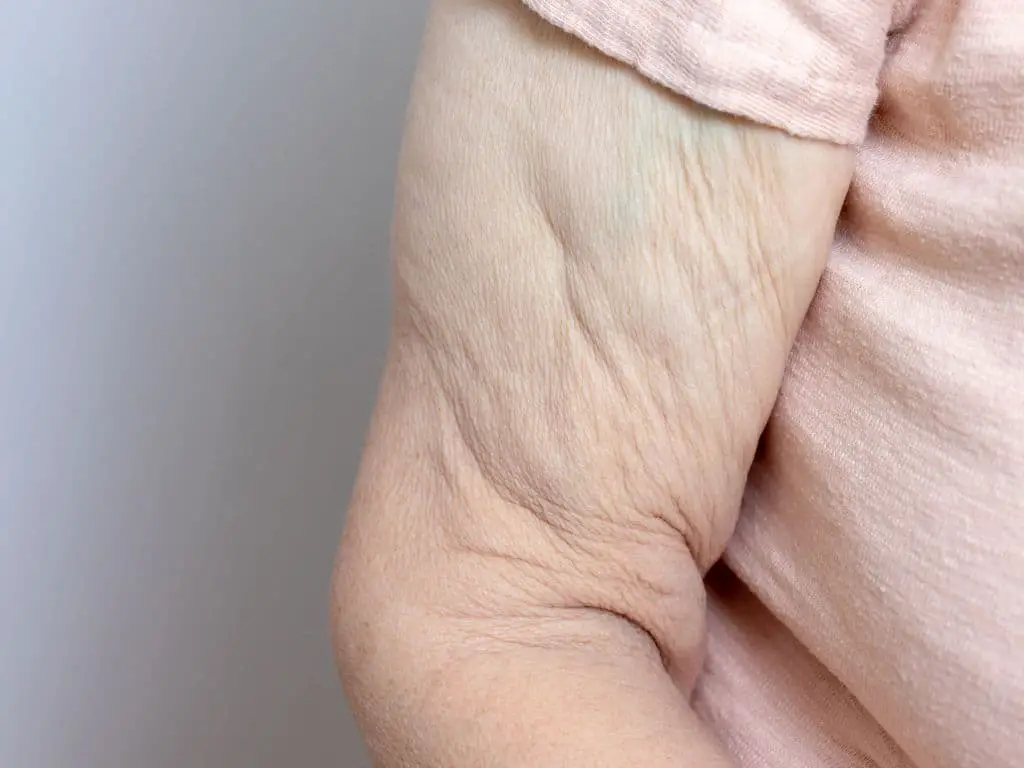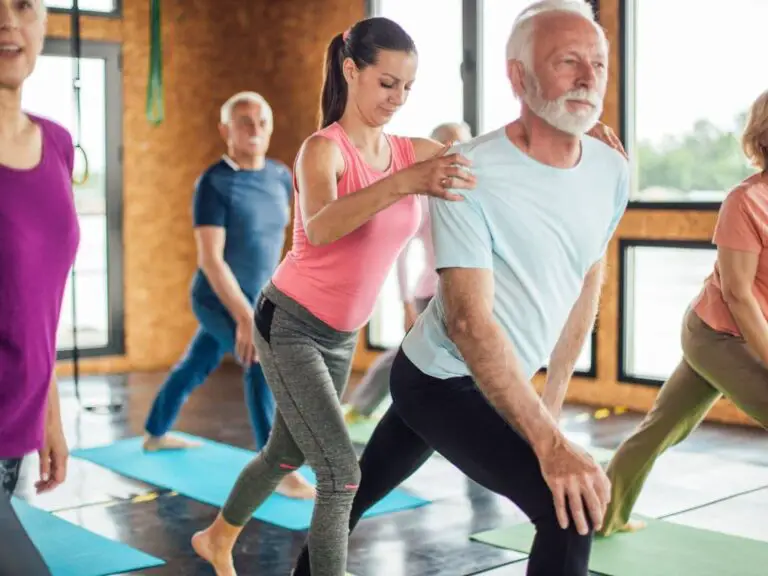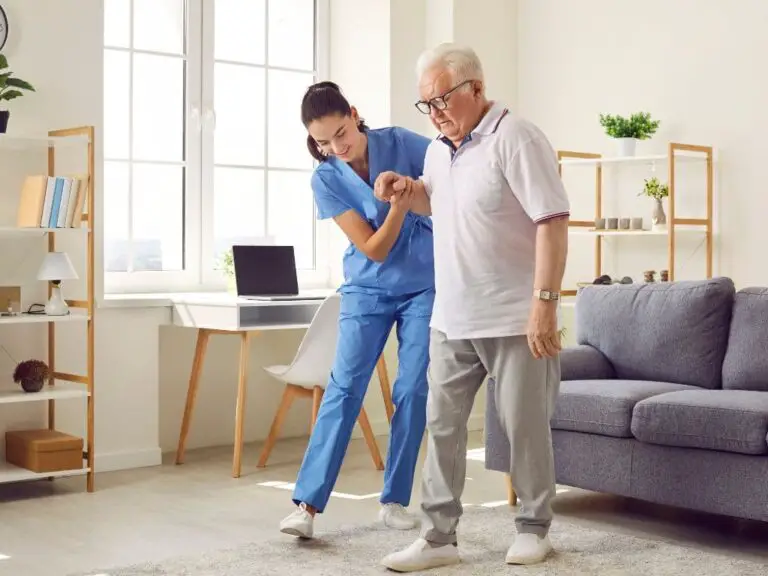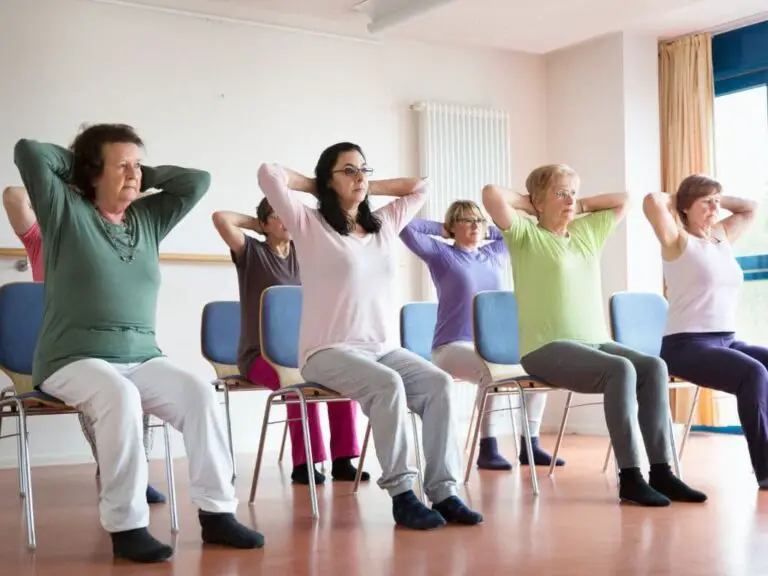Can Loose Skin on Legs Be Tightened?
As we age, our skin naturally loses some of its elasticity and firmness. This can lead to loose, saggy skin on the legs, especially for seniors who have lost a significant amount of weight.
Loose skin on legs can be tightened with a combination of strength training, yoga, Pilates, and cardio exercises, along with a nutrient-rich diet focusing on lean proteins, fruits, vegetables, and healthy fats. Proper hydration, use of certain supplements, and daily moisturizing can also help. In severe cases, plastic surgery is an option, although it carries potential risks.
While there is no way to completely prevent changes to skin with age, there are exercises that can help tighten and tone loose skin on the legs. The key is understanding the relationship between aging, weight loss and loose skin, and combining targeted exercises with proper nutrition and hydration.

How Does Aging Impact the Skin and Cause Loose Skin on Legs in Seniors?
To understand how to tighten loose skin on the legs, it helps to first look at how aging impacts the skin. As we age, our body produces less collagen and elastin– two proteins that help keep skin firm, elastic and tight. Collagen provides structure for the skin and elastin allows the skin to snap back into place when stretched. With the breakdown of these proteins, the skin loses its elasticity. It becomes thinner and more prone to wrinkling and sagging.
This natural decline in collagen and elastin is accelerated by factors like sun exposure, smoking, dehydration and nutritional deficiencies. The loss of skin elasticity from reduced collagen and elastin makes the skin less able to adjust to changes in weight and body shape.
Weight loss is another major factor that can lead to loose, saggy skin on the legs and other parts of the body. When someone loses a significant amount of weight quickly, the skin doesn’t have time to shrink along with the body’s new size and shape. This leaves excess skin hanging loosely. This effect is even more pronounced in older adults whose skin has already lost elasticity from aging.
What are the Best Exercises for Seniors to Tighten Loose Skin on Their Legs?
While plastic surgery can remove loose skin, there are exercises that can help tighten and tone loose leg skin for seniors looking to avoid surgery. The key exercises to reduce loose, saggy skin on the legs include:
- Strength training: Lifting weights 2-3 times per week works to build muscle mass in the legs. This helps fill out loose skin and provides more tone and shape. Targeted exercises like squats, lunges, and calf raises are especially effective.
- Yoga: Yoga poses like downward dog, chair pose, and warrior I/II build strength while also deeply stretching the legs. This stretching stimulates circulation and improves skin elasticity over time.
- Pilates: Controlled Pilates movements utilize resistance to tone the legs. The Hundred, side leg lifts, and leg circles target saggy inner and outer thighs.
- Cardio: Getting the heart rate elevated with cardio 3-5 times per week boosts circulation and blood flow to the skin. Walking, swimming, and cycling are low-impact options.
Ideally, seniors should aim for 30-45 minutes of focused exercises to tighten leg skin 3 times per week along with daily cardio activity. It’s important to start slow and gradually increase duration to avoid overuse injuries. Proper hydration and rest days are key.
Will Weight Loss Help to Tighten My Loose Leg Skin?
Weight loss can sometimes help tighten loose leg skin, but results vary depending on the amount and rate of weight loss, age, genetics and other factors. Here are some key points on how weight loss impacts loose leg skin:
- Gradual weight loss of 1-2 pounds per week allows the skin more time to shrink and adjust, which may reduce loose skin. Rapid weight loss can leave excess skin.
- The more weight that’s lost, the harder it is for the skin to snap back. Significant weight loss of 50+ pounds makes loose skin more likely.
- Older skin or skin that has lost elasticity due to aging is less likely to bounce back after weight loss. Younger skin has more elasticity.
- Genetics play a role. Some people’s skin is just more prone to sagging and less apt to tighten.
- Staying well hydrated and moisturized during weight loss improves skin elasticity.
- Building muscle tone through strength training while losing weight can help fill out loose skin.
- A balanced diet high in protein, healthy fats and collagen-boosting vitamins supports skin health during weight loss.
While losing excess body fat can reduce the appearance of loose skin somewhat, targeted exercises, nutrition and cosmetic procedures are often needed to fully tighten loose leg skin after major weight loss. It’s best to lose weight gradually, stay hydrated, and focus on overall skin health. But additional skin tightening measures are typically needed, especially for seniors and after substantial weight loss.
How Can Seniors Combine Exercise with Nutrition to Tighten Loose Skin on Their Legs?
While targeted leg exercises are crucial for tightening loose skin, nutrition also plays a vital role. Along with exercise, a diet focused on lean proteins, fruits/veggies and healthy fats can improve skin elasticity. Key nutritional strategies include:
- Eat adequate protein – aim for 0.36g per pound of body weight daily. Protein provides amino acids that boost collagen production. Salmon, chicken, Greek yogurt and tofu are great options.
- Get plenty of Vitamin C which is essential for collagen formation. Citrus fruits, peppers, broccoli and strawberries are excellent sources.
- Increase healthy fats like omega-3s from fish, nuts and olive oil to nourish skin.
- Stay well hydrated by drinking at least 2 liters of water daily. Hydration plumps up skin cells.
- Reduce sugars and refined carbs which can damage collagen.
Making these nutritional changes along with leg tightening exercises provides greater benefit than either alone. The exercise stimulates circulation while nutrition provides the building blocks for new collagen.
What Foods and Supplements Can Help Seniors Tighten Loose Skin on Their Legs?
Along with a diet focused on lean proteins, veggies, fruits, and healthy fats, supplements can also optimize the diet for tighter skin. Key supplements to consider include:
- Collagen peptides – Collagen supplements provide the raw material for the body to replenish collagen. Look for hydrolyzed collagen that is easily absorbed.
- Vitamin C – As mentioned above, Vitamin C aids collagen production. Look for an antioxidant-rich vitamin C supplement.
- Hyaluronic acid – This helps the body retain moisture for plumper looking skin. 100-200mg daily is an effective dosage.
- Omega-3s – If it’s difficult to get enough omega-3s from oily fish, a fish oil supplement provides anti-inflammatory benefits.
- Protein powder – Whey or plant-based protein powder helps seniors meet daily protein needs.
Along with targeted exercise and nutritional strategies, staying well hydrated by drinking at least 64 ounces of water daily is key for keeping skin supple and tight.
How Can Seniors Prevent Loose Skin on Their Legs?
Preventing loose skin on the legs starts with maintaining strength, muscle tone and a healthy diet:
- Do regular strength training using weights, resistance bands, or bodyweight at least 2-3 times per week. Squats, lunges, and calf raises tone the legs.
- Follow a diet rich in collagen-boosting foods like citrus fruits, leafy greens, eggs, and berries.
- Meet daily protein needs to provide amino acids that build lean muscle and collagen.
- Stay well hydrated by drinking at least 64 oz. of water per day.
- Include Omega-3 rich foods like salmon, walnuts, and chia seeds.
- Apply moisturizer daily to nourish skin, and use Vitamin C serums to boost collagen production.
- Protect skin from sun damage by wearing sunscreen year-round.
Starting these habits earlier allows the skin to better retain elasticity and avoid looseness. However, it’s never too late to start strength training, eating collagen-boosting foods, and staying hydrated. While completely preventing loose skin with age is difficult, following these measures can minimize looseness.
Are There Any Risks Associated with Cosmetic Surgery for Tightening Loose Skin in Seniors?
For seniors with severe loose leg skin or for whom conservative treatments haven’t worked, plastic surgery is an option. Procedures like thigh/arm lifts, tummy tucks, and lower body lifts remove excess skin. However, there are risks to consider:
- Scarring can occur from incisions, though surgeons make attempts to minimize this.
- There’s potential for seromas or fluid buildup under the skin after surgery.
- Poor wound healing and skin necrosis are also possible complications.
- Surgery often requires general anesthesia which carries risks for older adults.
- Loose skin may return without continued proper nutrition and exercise.
Undergoing multiple procedures at once and significant fat removal can increase risks and recovery times. Having stable body composition and metabolism reduces risks. Consulting an experienced surgeon and carefully considering risks versus benefits is important before choosing surgery.
How Can I Avoid Getting Loose Leg Skin in the First Place?
Here are some tips to help avoid loose, saggy leg skin in the first place:
- Maintain a healthy weight and avoid frequent fluctuations in weight. Gradual weight loss of 1-2 lbs per week is best if losing is needed.
- Perform regular strength training and muscle-toning exercises like squats, lunges and Pilates. Building muscle tone helps support skin.
- Eat a diet rich in collagen-boosting foods like citrus fruits, leafy greens, berries and beans. Collagen helps maintain skin elasticity.
- Make sure to get enough protein daily – around 0.36g per pound of body weight – to provide amino acids for building collagen.
- Stay well hydrated by drinking at least 64 oz of water per day. Hydration supports skin health.
- Apply moisturizer daily and use firming body lotions that contain ingredients like vitamin C, retinol, or cocoa butter.
- Protect skin from sun damage by wearing SPF 30 sunscreen on exposed skin year-round. UV rays degrade collagen.
- Don’t smoke, which can deplete collagen and elastin in the skin.
- Manage conditions like obesity, diabetes and corticosteroid medications that can weaken skin.
- Consider supplements like collagen, hyaluronic acid, omega-3s and vitamin C to nourish skin.
Taking proactive steps when you’re younger makes a big difference in helping maintain firmer, more elastic skin as you age. But it’s never too late to start focusing on skin health through diet, exercise and skincare to avoid looseness.
Conclusion
In conclusion, a combination of targeted leg exercises, nutrition focused on lean proteins and collagen-boosting foods, proper hydration, and skin moisture can help seniors tighten loose skin on the legs. While surgery is an option, conservative treatments should be tried first due to potential complications. Maintaining good nutrition, muscle strength, and cardio fitness helps prevent loose skin in the first place. With a smart fitness and nutrition plan, seniors can achieve tighter, toned legs.
Frequently Asked Questions
-
Can loose skin on legs be tightened?
Loose skin on legs can be tightened to an extent through a combination of strength training exercises, yoga, Pilates, and cardio, which help to build and tone muscle. A diet rich in lean proteins, fruits, veggies, and healthy fats, along with proper hydration, can improve skin elasticity. In severe cases, cosmetic surgery may be considered.
-
What food is good for weak muscles?
A healthy, balanced diet with all major vitamins and minerals is essential to combat muscle weakness. These nutrients can be found in milk, eggs and whole grains as well as poultry, eggs, dairy, meat, egg whites, legumes, avocados, spinach, and fish.
-
Can saggy legs be toned?
By exercising, eating healthy, and strengthening your muscles with strength training, you can transform flabby legs into slim, toned ones. Mayo Clinic says that a healthy diet combined with good exercise habits will lead to a slimmer and more toned body.
-
Can Crepey skin be reversed?
Unfortunately, there is no home remedy that can reverse crepey skin. However, dermatologists have many methods to improve your skin’s appearance.
-
What is the best fruit for bones?
Vitamin C-rich foods include orange juice, bananas and orange juice. Vitamin D and calcium-rich fruit juices. Vitamin K-rich fruits such as grapes and blueberries.
-
What foods help with leg fatigue?
The best food to fight fatigue and hunger is nuts and seeds. Healthy nutrients and energy can be obtained by including a wide variety of seeds and nuts in your diet. You can try almonds and Brazil nuts as well as cashews and hazelnuts. It is best to eat raw and unsalted varieties.
-
What 3 exercises will help strengthen legs?
Water aerobics, stationary cycling, and walking are all low-impact ways to increase blood flow and strengthen your legs. Start by exercising for just 30 minutes 5 days per week, or increase your intensity to do more.
-
Do bananas help build muscle?
Bananas contain a lot of nutrients, including potassium and carbs. These are essential for muscle growth and exercise performance.
-
What helps sagging skin on legs?
Exercise and creams over-the-counter can often have an impact on loosening the skin around the thighs. In severe cases however, it may be necessary to perform a thighlift in order to get the desired results.
-
What causes weakness in the legs?
Leg weakness may be hereditary or genetic and can pass down from generation to generation. Examples include myotonic and muscular dystrophies. Progressive weakness is a result of genetic causes. This means that the weakening gets more severe over time.






